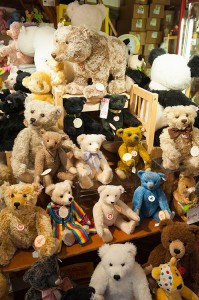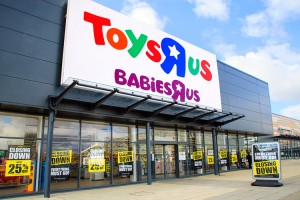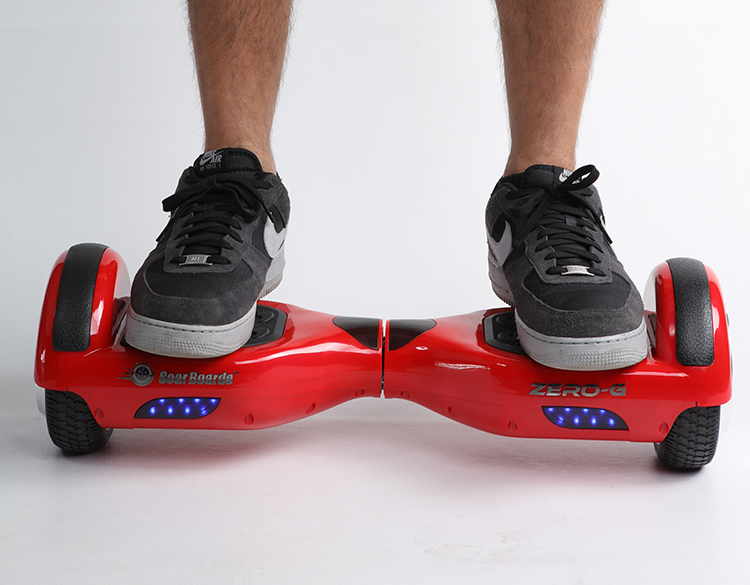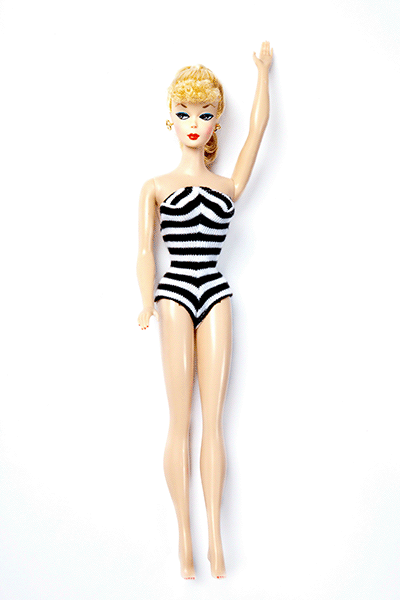National Teddy Bear Day
Monday, November 14th, 2022
Teddy bears are stuffed toy bears. These bears, on display in a toy shop, were made by the German-based Steiff company, one of the earliest makers of teddy bears.
Credit: © Oramstock/Alamy Images
The largest collection of teddy bears in the world includes 20,367 teddy bears! The largest teddy bear in the world is 63 feet 8 inches (19.41 meters) long. Around 50 million teddy bears are gifted in the United States alone each year. Today, November 14, is National Teddy Bear Day. Teddy bears have been a popular stuffed toy animal for over one hundred years. But why are they called teddy bears? And how did they become so popular?
Teddy bears were first made in the early 1900’s and named after United States President Theodore Roosevelt. Roosevelt’s nickname was Teddy. Now, the first teddy bear was not a toy for him, he was born in 1858! It is said that it all started on a hunting trip. Don’t worry, no bears were harmed in the creation of the first teddy bear!
In 1902, Roosevelt was on a hunting trip in Mississippi. A guide had caught and tied up a bear for the president to shoot. But Roosevelt refused to shoot the bear. The American artist Clifford Berryman drew a cartoon for The Washington Star showing the incident. After the cartoon was published, people began calling the captured bear “Teddy’s bear.”
While that story explains where the name came from, we don’t know for sure who made the first ever stuffed animal teddy bear. Two companies both claim to have made the first teddy bear—Steiff, a German-based company, and the Ideal Novelty and Toy Company of the United States.
Margarete Steiff, the founder of Steiff, began producing stuffed animals made of felt in her workshop in Germany in 1880. In 1902, her nephew Richard designed a stuffed plush bear. An American placed a large order for the bears, and they soon came to be called teddy bears.
In New York City in 1902, the Russian-born shopkeeper Morris Michtom saw Berryman’s cartoon. Michtom’s wife, Rose, sewed a stuffed bear that Morris placed in the window of their novelty store. Soon, the Michtoms were selling a large number of the stuffed bears. They claimed they had a letter from President Roosevelt giving them permission to name the bears after him, though the letter has never been found. The Michtoms founded the Ideal Novelty and Toy Company in 1907.
The first teddy bear by Ideal was made of brown plush and had jointed arms and legs and shoe-button eyes. It had a small head with a long snout, and a long body. The teddy bear became an extremely popular toy. Other companies copied the toy, producing teddy bears in different styles and sizes.
Over the years, many popular characters from books have been made into stuffed teddy bears, including Winnie-the-Pooh, Paddington Bear, and Corduroy. Teddy bears made popular by television cartoons include Yogi Bear from the 1960’s and the Care Bears from the 1980’s through 2000’s. Teddy Ruxpin, a stuffed bear introduced in the 1980’s, was able to “speak.” Prerecorded audio tapes were inserted in its back. Beginning in the late 1990’s, people could have a teddy bear made for them at stores that assemble the toys on site. Customers choose various features and accessories for the made-to-order bears.





